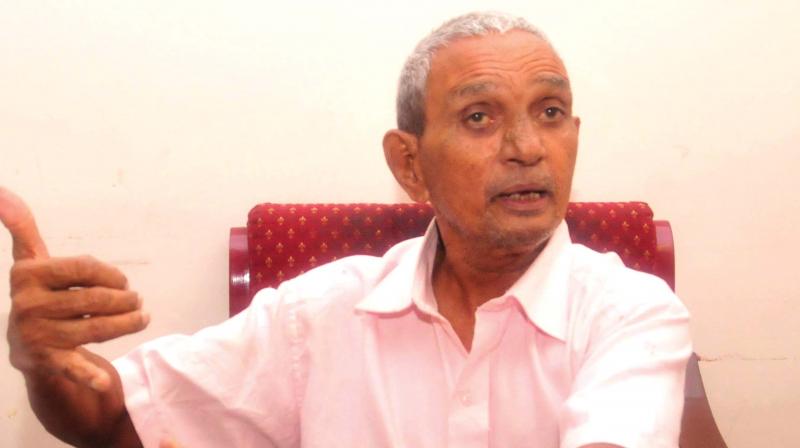In the shadows of misery
Chirakatta Shalabhangal is a school magazine that focuses on children from broken families.

The two brothers are in the hotel room, relaxing after a nap. The elder of the two - Pasumarthy Rattaiah Sarma - stands up on seeing yet another reporter walk in with a notebook, shows her to a chair and announces to his brother, it has been the same same questions all day. Sreelakshmy Govardhanan, his student from Thrissur and translator for his interviews, laughs, all the while keeping a respectable distance from the master. He doesn't need questions though. Assuming it's going to be about the difference between the traditional and the modern, he plunges into his story. Of the old days of Kuchipudi Yakshaganam - from about 70 years ago - when he, as a seven year old, began learning it. He is on a mission to revive the old form of the art, and Sreelakshmy, a student for ten years, brought him down to Kerala for it.
After a workshop in Thrissur, he came to Thiruvananthapuram to see Padmanabha Swamy. "I have come here before," he says, "back in '67, and then we went on a boat to a Sivan's temple." Sreelakshmy can't be sure which place he is talking about. But the maestro doesn't wait, he goes back to the days when Kuchipudi Yakshaganam was performed as a group, when one artiste had to know everything - music, dance, acting and even makeup. "You did it all by yourself. Men played women characters," he says and his brother - Pasumarthy Narayana Murthy -- shows the cover of the book he was reading. It has a man - their uncle Vedantam Satyanarayana Sarma - dressed as a woman, looking exactly like one in manner and expression. "He was given the Padma Shri when he was very young," the proud nephew says.
Those were days women didn't perform the Kuchipudi Yakshagana, when it was restricted to their state, and to the Brahmin caste. "But master is not looking at all that, he wants it to spread to all the places, and to all people," Sreelakshmy says. Her master speaking his native language of Telugu needn't always be translated. The expressions convey much. "What has the art form come to now?" he asks. "Every artiste that played a character had a certain authority that comes from doing it all on your own - the music and the choreography. Usha was Usha and Banasura was Banasura. Now someone composes, someone else choreographs, a third person does the makeup and the artiste just performs. It's become a solo form as we see it now, not the original art that had 10 to 20 people on stage."
P then sings the Bhama Kalapam first in its original form and later a changed form that was adapted for movies, and to attract more people. He then asks, how should they perform - the art in its original form, or an altered form to attract people? The songs are all centuries old, based on characters in Bhagavadam, Ramayanam and Mahabharatham. P is perhaps the only one who knew ten of those by heart, S reckons. "They used to wake up at 4 in the morning and go on practicing or performing till 9.30 in the night. They grew up appearing in small roles at first and learning from watching seniors perform."
Pasumarthy is a traditional Kuchipudi family from Krishna district, Vijayawada, Andhra Pradesh. The village it originated from is Kuchipudi, after which the dance is named. In Kerala, most of the Kuchipudi one sees is Tharangam - where the dancer performs balancing the feet on a plate. "But Tharangam in the original art form is only a filler, used during the time the Yakshaganam performers changed," the master says.
Sarma had once worked as a Professor of Kuchipudi Yakshaganam at Siddhendra Kalakshetram and a 'great man from Chennai' he can't remember the name of, came to watch his lecture demonstration. He did Usha Parinayam in his traditional style and the man said he had to watch a lot of people perform 'like in a circus' before he met Sarma. That year, Sarma got the Kendra Sangeeta Nataka Academy award for Kuchipudi.

